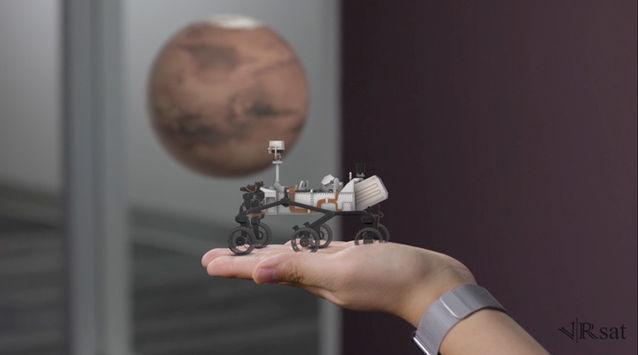Avegant introduces light field technology based AR mixed reality solution. That company is a Silicon Valley start-up company, who has developed a retinal projection for the VR head of Glyph.
Today, the company announces the development of a new type of AR head. The new head is based on light field display technology.
Avegant’s new head is based on Glyph’s retinal projection technology. In this technology there is a transparent baffle in front of the device. Through this it creates virtual images merged on the real world together making mixed reality. Last month the company showed on The Verge a demonstration that the new head is just a prototype. But that was not the focus at that time, the focus was on manufacturing a device that uses the light field display technology. Please note that this is the Magic Leap’s proud technology. And is the most confidential technology ever from Magic Leap.
I have experienced three scenarios: the virtual solar system, the seabed environment, and the virtual characters in the same room with the actual size of a living person. Avegant technology is a bit of cumbersome because of cabling as compared to HoloLens which feels more uncomfortable. However, it is said that Avegant’s head-shaped prototyping design expands the field of view. So the field of view has a notebook size, not just like the Hololens’s card size. It also produces the image that feels more clearer, richer and more realistic.
In the solar scene, I was able to observe the Earth’s satellite orbit and the red dot on Jupiter. The demo also shows that these objects can have different focal lengths in a fixed environment. And when I look at the Saturn, the other planets become blurred and Saturn and its rings become clear.
Light field technology Distance concept of object focal length
In the submarine scene, I can stand quietly watching my room around the turtle in the slow motion. I can squat down to observe a standard size of the fish tank, which has many aquatic organisms. It also demonstrate the use of commonly used camera so that the head has a location tracking function. But Avegant said the company eventually wanted to build an equipment similar to Microsoft’s head, which could bring the camera and sensor into the device to achieve more accurate tracking capabilities.
